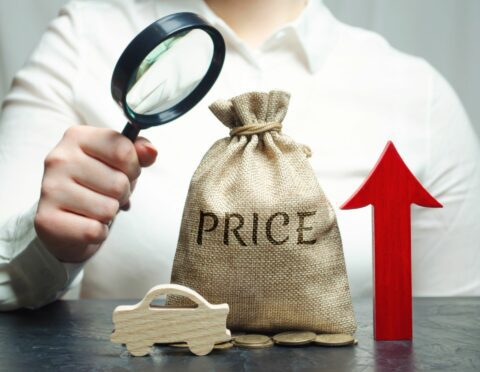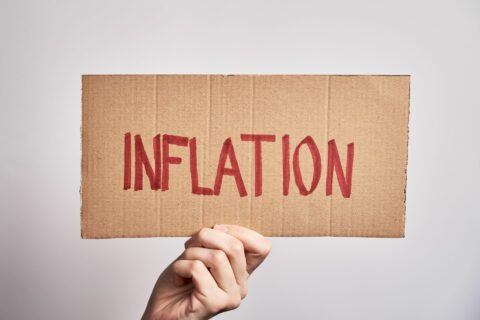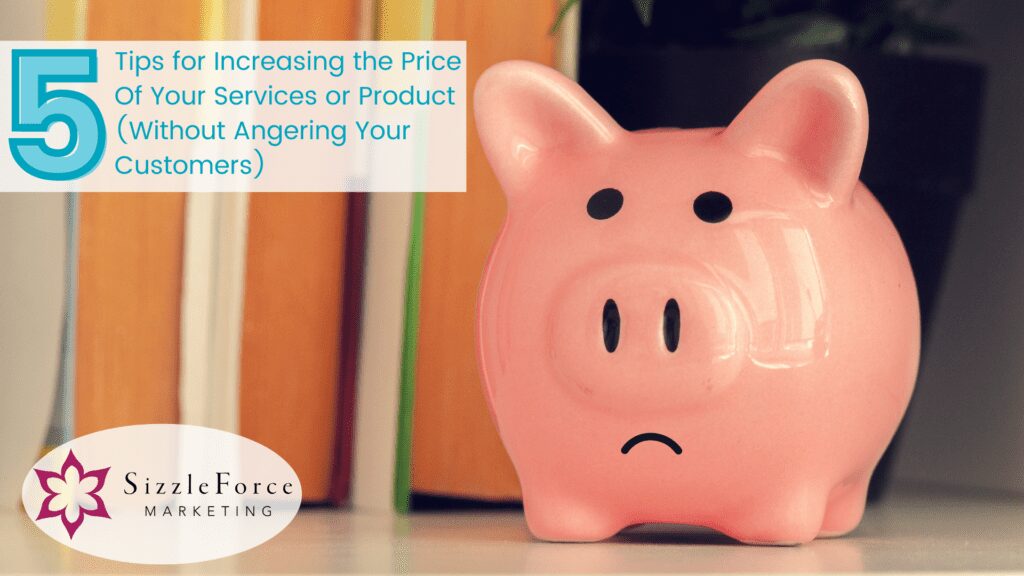Inflation.
It’s quite the buzzword right now. In fact, EVERYONE seems to be talking about it.


And its effects are far-reaching and completely unexpected.
Brides and grooms are cutting people from their guest lists (Sorry Uncle Steve. The caterer just raised their price on roasted chicken).
Beleaguered customers absolutely salivated over Labor Day deals (will Labor Day become the new Black Friday someday in the not-so-distant future?).
Mr. Quashie, a YouTube star of fried-chicken fame has lamented the rising cost of his beloved fried chicken sandwich. As The New York Times reported, “Mr. Quashie’s go-to combination for every review — fries, four wings, a chicken burger and a soda — used to cost about 2.5 pounds, or roughly $3. That same meal is now £5 or £6 and occasionally more.”
Even sports broadcasting has been hit hard by inflation.
With prices going up, the costs of running a business are going up. Odds are you in need of a price increase too. But let’s be honest.
Nobody likes a price increase. NOBODY.
So how do you satisfy your most loyal customers who cry TRAITOR when they see your prices have gone up?
Here’s how to increase the price of your services or products–without inciting the wrath of your most loyal fans.
First, you have to know what the price increase should be.
Raising your prices is like a Goldilocks metaphor. You can’t do it too much (you’ll lose customers) but you can’t do it too little (you’ll go into the dreaded cash flow red zone).
How can you determine what the right price increase is?
We are experts in the marketing sector, not the financial sector. So we asked someone who knows–Andrea Jenson, from The Cash Flow CFO. Her fractional CFO services help scaling businesses that don’t want (or need) to hire entire internal finance teams. She knows how to improve a business’ profitability, and is the perfect person to help us navigate the precarious world of pricing for inflation.


First and foremost, she points out that if your competitors are raising their prices to account for inflation, you probably should too. But not all price increases are built the same.
“When matching competitor pricing, be sure to maintain the percentage ratios between revenue and cost of goods (COGS) that you need to conduct your business efficiently,” she advises. “You may not be able to match their lower price if your expenses are higher than theirs.”
She points out that you can never truly know what your competitor’s expenses are, either.
So look at what your competitors are doing–but ultimately, do what it takes to run your own operations effectively. In other words, do you.
“You should increase your prices commensurate with the increase in prices that you have experienced for your cost of goods sold. For example, if the amount of wage that you need to offer is 10% higher than normal to attract the talent needed to perform the service that your company offers, then you will increase your prices to maintain the percentage ratio needed to keep your company’s finances in line with your goals.”
Not sure if your numbers are too outrageous? Andrea recommends you look at the headlines to find out.
“Perception is reality,” she explains. “The general population does not know, with certainty, what the current rate of inflation is. They are told by the mainstream media, not by accessing government websites that track inflation levels.”
She advises that business owners research articles from various media outlets that discuss inflation–and use that information to inform their own strategies.
“Generally, you will find that the range is between 8%-20%, depending on the source. Raising your prices using this range gives you a ballpark estimate to start–and a credible range with cited sources to justify that increase.”
Don’t do it all at once.
So you have your numbers, but the thought of doing it all at once gives you a panic attack?
You don’t need to make the huge leaps all at once.
If you want to increase prices, it’s important that you do so in a way that doesn’t make customers feel like they are being gouged. You can accomplish this by increasing your prices incrementally over time. This is called “stepping up” and it allows you to gradually raise prices without making customers feel as though they have been ripped off.
Be transparent.
Odds are that, by now, you have seen a haphazardly handwritten sign taped to a cash register. It might say something like…
Dear patrons, due to the spike of food costs, we have to increase cost of all items by $1.
or …
Prices are subject to change due to inflation.
There is something to be said for the simple honesty of these signs. After all, they are relatable. We can all collectively hate inflation.


While we aren’t suggesting you handwrite a note of apology to your customers–it doesn’t hurt to be transparent about the fact that you are raising prices–and why. It makes you relatable.
Pro Tip: Make this explanation universally applicable and public-facing. Nobody wants to feel like you are raising prices just for them. That is the opposite of what you want them to feel!
Tell them what they get for that price increase.
Chipotle has raised their prices more than once in the past few years. And we’ve seen some forecasts saying that you will pay as much as 20% more for your beloved barbacoa burrito than you did in 2020.
But Chipotle isn’t just raising prices to accommodate rising food costs. As Mashed reports, the increase is also to help cover the costs of a new labor management tool. The idea is to retain good employees, implement better training, and to increase customer satisfaction.
So you might be getting the same ‘ole lettuce you always got in your taco salad. But the person who serves it to you? Their level of customer service might go up.
If you have benefits to offer–things that you have improved about your product or service–now is the time to talk about them. It will make your price increase go over far better.
Give them other options.
McDonald’s has their famous value menu where you can get yourself anything from a McChicken to a sausage burrito. And that menu is serving them quite well–because it seems that people aren’t all about the bells and whistles that come with your standard combo meal. They credit these value options as part of the reason their earnings are staying strong and steady.


Take a page out of the Golden Arches’ playbook. If your customers simply can’t afford what you sell anymore–give them something they can afford.
Surviving Inflation… It CAN Be Done!
So that’s it. That’s our guide to increasing your prices. So go forth and do it!
But hold up, you might be thinking…
Reading about increasing your prices is one thing. But the actual doing of the dastardly deed is another thing altogether. Does the mere thought of it give you cold sweats?
We get it.
This is not something you want to mess up–and it has a lot of moving parts. So if you need a bit of help, we can’t recommend The Cash Flow CFO’s virtual services enough–they make strategizing complicated financial moves like this a cinch.
And if you need help with the messaging? We’ve got you covered. Our fractional CMO services are all about creating a heart-centered brand–and we will help you raise your prices without inciting the wrath of the teeming masses.

